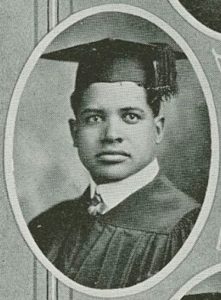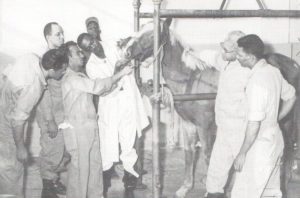
With a Doctor of Veterinary Medicine degree from Colorado Agricultural College (now Colorado State University) and 25 years conducting a large animal practice in Keensburg, Colorado, Dr. George W. Cooper was well equipped to serve Tuskegee Institute’s inaugural class of 39 students.
Cooper graduated from the Colorado Agricultural College veterinary school in 1918, and when the veterinary school at Tuskegee Institute (now Tuskegee University) was established in 1945, he was one of the first eight faculty members to join the program.
The Doctor of Veterinary Science Degree program at Colorado Agricultural College was established in 1907, graduating its first class of students in 1910. By 1918, just after the close of World War I and the same year Cooper graduated, the veterinary program experienced an upward surge in enrollments, reaching the highest total in the college’s history (at the time) at the beginning of the 1919-20 academic year.
Creating opportunities
A historically black college, Tuskegee paved the way for students to pursue an education and career in veterinary medicine, an opportunity not often afforded to black Americans during the post-World War II era. As part of this pioneering effort, Cooper provided hands-on experiences to students through his role as head of the Department of Large Animal Medicine and Surgery.
One of the first black Americans to hold membership in the American Veterinary Medical Association (AVMA), Cooper ensured access to professional societies was available to students, helping establish a student chapter of AVMA at Tuskegee. His students showed their appreciation for his continued dedication and commitment by affectionately referring to him as “Dad Cooper.” Cooper served the school for 24 years until his retirement in 1969, and continued involvement in school affairs until his death in 1978.

None of the eight original veterinary faculty members had prior experience in veterinary medical education when they started the school, but Cooper and his peers developed a burgeoning program that continues to be a pinnacle of diversity. Today, nearly 75 percent of black veterinarians in America are Tuskegee graduates.
Beyond the boundaries of the Colorado Agricultural College campus, Cooper embraced and demonstrated what it meant to be a CSU Ram, showing and sharing pride for carrying on a legacy of extraordinary animal care.